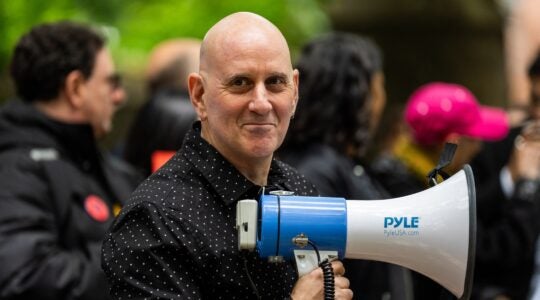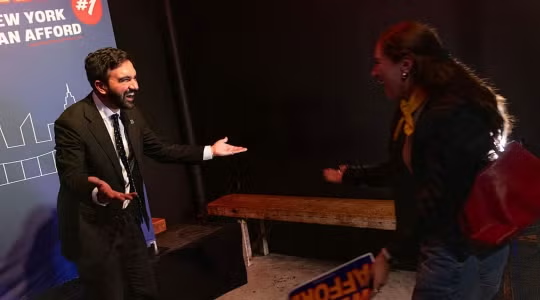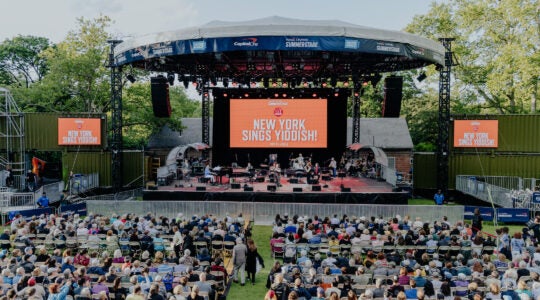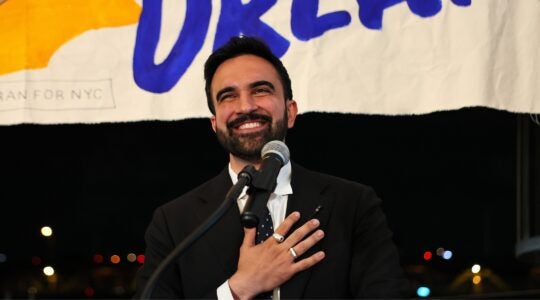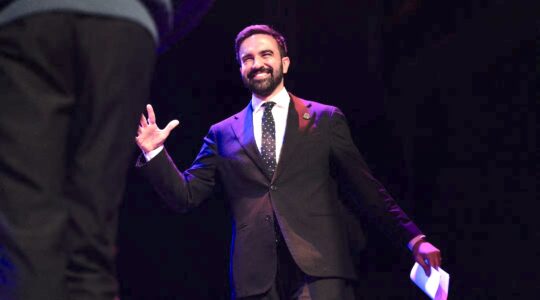An exhibition on the “Yiddish Fight Club,” about Jewish boxers and wrestlers, opened this week at the YIVO Institute of Jewish Research in Manhattan. It was created by Eddy Portnoy, who teaches in the Judaic Studies Program at Rutgers University and serves as academic advisor at YIVO’s Max Weinrich Center for Advanced Jewish Studies. The Jewish Week interviewed Portnoy by email; this is an edited transcript.
Q: The heyday of Jewish wrestlers was several decades ago. Why are we still interested in them?
A: Not everyone is interested. Those who are may find Jewish boxers and wrestlers compelling not only because athletes occupy valued positions in popular culture, but because Jewish athletes — and what’s more, Jewish athletes involved in violent sports — have become a rarity. Jewish involvement in boxing and wrestling also harkens back to a time when Jews were working class immigrants or the children of immigrants and part of a Jewish culture that seems more natural, or more authentic.
Despite the ascendancy of a strong Israel, is there a nostalgia for the era of visible, tough Jews?
Sure. Although I’m not sure Israel comes into play the way that an individual boxer or wrestler would. While most American Jews support Israel in some abstract way, most have never been there, nor do they know much about it. As a result, it may not be a relevant symbol for them. A boxer, wrestler, or gangster, on the other hand, is a person with a narrative and much more relatable as a symbol of power.
How did you — a scholar who’s studied in France — become interested in something like boxing and wrestling, which many Jews today see as a somewhat lowbrow pastime?
Scholars can’t like boxing and wrestling? Scholars like all kinds of strange stuff you might not expect. Whether or not they include it in their work is another matter.
Who’s your favorite Jewish boxer or wrestler?
I don’t play favorites. They’re all incredibly fascinating in their own ways. Whether they became entrepreneur/rabbis like Raphael Halperin, or survived the Warsaw Ghetto like Shepsl Rotholtz, each one has an incredible story — in addition to their success in the ring.
An exhibit about Jewish boxers and wrestlers of bygone days seems like a topic for a historical institution, not for one dedicated to the preservation of Jewish culture. What do these guys have to do with Yiddish?
Isn’t it the mission of a Jewish historical institution to preserve Jewish culture? While Yiddish culture is a major focus, so are all aspects of eastern European Jewry and its diasporas. The boxers and wrestlers were all either Yiddish speakers or the children of Yiddish-speaking immigrants. Yiddish was a part of their lives and they and their Jewish fans spoke about their exploits in Yiddish. A unique vocabulary was created to describe these activities and the way they moved, punched or tackled all took place in Yiddish. All of this was also written about in the Yiddish press.
Jewish street fighters and gangsters were also common figures on the streets of pre-WWII immigrant ghettoes in places like New York and Warsaw. Even more than the boxers and wrestlers, this type of language emanated from them. Yiddish fighting slang that developed in the Yiddish underworld ultimately served to enrich the language. The YIVO linguists who collected these fighting words and phrases understood that languages find enrichment from all quarters and that the slang of the Yiddish-speaking underclass broadens the language as much as the linguistic creations of poets or scientists.
The New York Jewish Week brings you the stories behind the headlines, keeping you connected to Jewish life in New York. Help sustain the reporting you trust by donating today.
